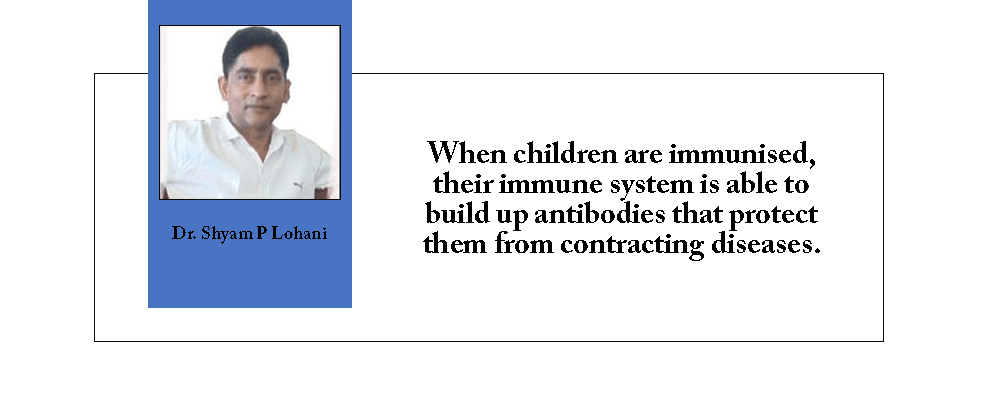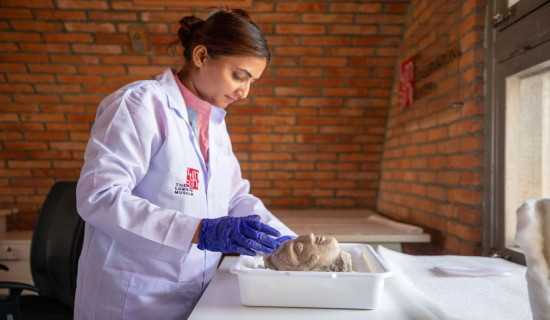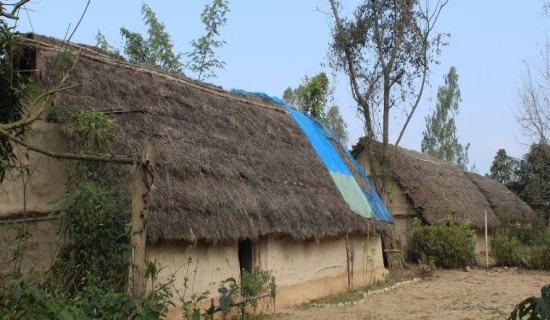- Saturday, 24 May 2025
Promoting Immunisation To Save Lives
World immunisation week is being marked around the globe with the theme of “The Big Catch Up”. Immunisation is key to protecting ourselves, our children, and future generations from infectious diseases. Vaccination helps prevent diseases that could spread to others now and also in the future. Most of the child’s vaccinations are completed between birth and six years of age. Oftentimes, vaccines are given more than once, and also in combinations. Although local healthcare institutions keep track of immunisation, all parents and caregivers have the primary responsibility to keep a careful record of their child’s immunisation status.
Although childhood vaccines or immunisations can be overwhelming for a new parent, their protection and thus cost-effectiveness far outweigh treatment costs if a child catches an infection later. Vaccine schedules recommended by the national immunisation programme of our country in which children from the ages of 16 to 23 months are mandatorily vaccinated against a range of diseases that include diphtheria, hepatitis B, measles-rubella, pneumonia, pertussis, rotavirus, tetanus, tuberculosis, and Japanese encephalitis. Vaccinations not only protect children from deadly diseases but also keep other children safe by eliminating the probability or greatly decreasing the chances of spreading it to other children.
Mortality
Full immunisation coverage is the fundamental right of every child and is one of the targets of the Sustainable Development Goal (SDG) 3. However, about 25 million children under 5 particularly in low and middle-income countries are still not fully immunized which is the highest since 2009 (WHO, 2022). Worldwide, infectious diseases are still a leading cause of morbidity and mortality. As of 2023, the total world population of children < 5 years of age is roughly estimated at 656 million (UNICEF, 2023). In 2018, an estimated 5.3 million children died due to all causes, and unfortunately, over 700,000 children died of vaccine-preventable infectious diseases. At the same time, global coverage of immunisation dropped from 86% in 2019 to 81 per cent in 2021 owing mainly due to COVID-19.
The body has many ways of defending itself against invading pathogens. The first defense is provided by the skin, mucus, and cilia that work as physical barriers to prevent pathogens from entering the body. The body’s natural immunity has the responsibility and capacity to defend our body against many infectious diseases.
The vaccine contains either the dead or weakened form or the virus or bacteria injected into the body. Once in our body, our immune system considers it dangerous and as a response, the immune system quickly creates antibodies to fight the virus and wipe it. Essentially, every time our body fights against a certain disease or infection, our immunity becomes stronger. Therefore, when we catch a similar infection in the future for real, the immunity responds effectively and fights it.
The immunity developed with vaccines or immunisation helps us prevent from catching a disease or spreading of infection and eliminate the pathogens. It is, therefore, easy to protect against a number of deadly diseases with the advancement of the science of immunization. When children are immunised, their immune system is able to build up antibodies that protect them from contracting diseases.
It is natural that every parent wants their children to grow healthy and stay protected from illnesses. Immunization prevents severe illness and safeguards from vaccine-preventable diseases. Child’s immunity is weak and are prone to diseases, even for a mild change of weather or change in food habits. Moreover, immunisation prevents the spreading of diseases from one child to another.
The cost of immunisation is far lower than the treatment of the disease itself. It has been estimated that every dollar spent on immunisation saves about USD 44 (WHO, 2021). Therefore, immunization is one of the most cost-effective interventions and it has been estimated that around 4 million additional deaths every year are avoided (WHO, 2021).
Barriers
It was found that the major issue in developing economies is not the acceptance of vaccines but their cost and availability. Several research studies in Nepal found that poverty, geographic difficulty, disadvantaged caste or indigenous population, cultural beliefs, being a woman, and low levels of maternal education all are barriers to immunisation. It was also found that children from disadvantaged castes or indigenous populations are less likely to access immunisation.
Over the years, vaccines have generated some controversy over safety issues, but no substantial evidence of harm has been found. Children can develop minor side effects from any vaccine, the important thing to know is that the benefits of vaccinations far outweigh the possible side effects if any. The immunisation coverage in Nepal for most of the diseases is around 90 per cent (WHO, 2023). Therefore, there is an urgent need for a mass awareness campaign about the benefits of immunisation and the efforts should specifically be targeted to the children of low coverage population.
(Dr. Lohani is the clinical director at the Nepal Drug and Poison Information Centre. lohanis@gmail.com)









-original-thumb.jpg)






-original-thumb.jpg)
